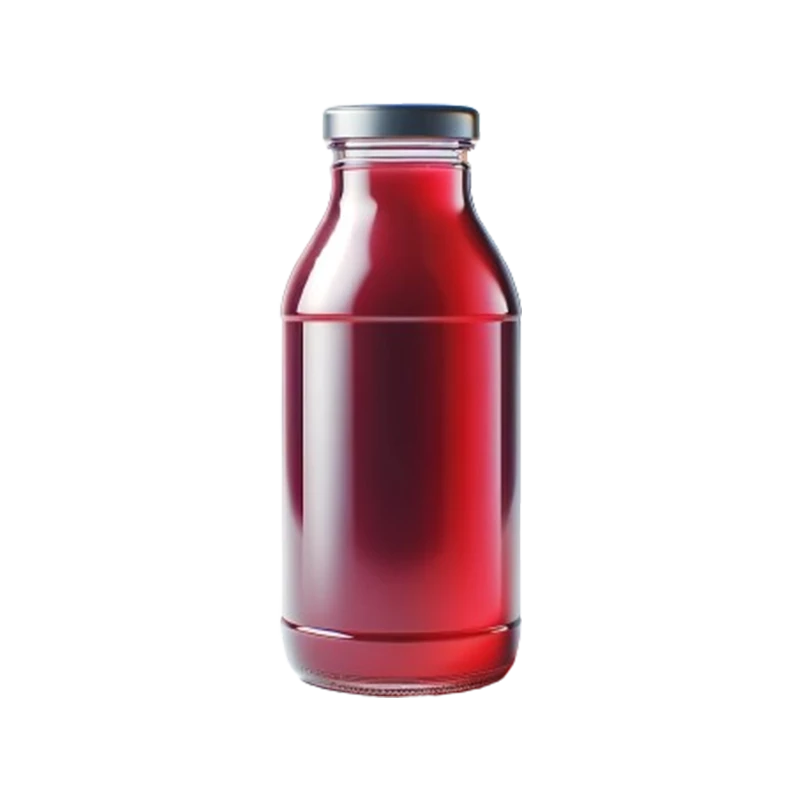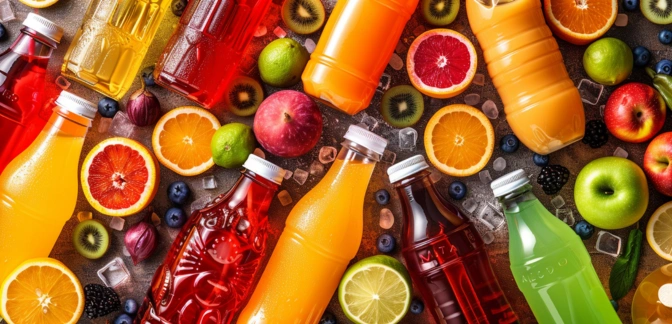Cranberry Juice — Nutrients, Health Benefits, and Shopping Tips

Written by Listonic Team
Last update on September 5, 2024
Cranberry juice nutrients
Nutrition facts
Amount per 100 g
Calories
🔥 46 kcal
| Nutrition per: 100 g | Value | % Daily Value* |
|---|---|---|
| Carbs | 12 g | 4.36% |
| Fiber | 0 g | - |
| Sugars | 12 g | 24% |
| Glycemic Index | 68 | - |
| Protein | 0 g | - |
| Sodium | 2 mg | 0.09% |
| Total Fat | 0 g | - |
*The % of Daily Value (DV) tells you how much a nutrient in a serving of food contributes to a daily diet. 2,000 calories a day is used for general nutrition advice.
Cranberry juice facts & tips
Health benefits
- Rich in antioxidants, particularly proanthocyanidins, which help protect the body from free radicals and reduce inflammation.
- Supports urinary tract health by preventing the adhesion of bacteria to the urinary tract lining.
- High in vitamins and minerals such as Vitamin C, which supports immune function and overall health.
- Hydrating and refreshing, making it a good choice for staying hydrated.
Health risks
- High sugar content in many commercial cranberry juices, which can contribute to weight gain, tooth decay, and increased risk of diabetes when consumed frequently.
- High calorie content particularly in sweetened cranberry juice, which can contribute to weight gain if consumed frequently or in large quantities.
- Potential for digestive discomfort such as stomach upset or diarrhea when consumed in large quantities due to the acidity of cranberries.
- Potential for interactions with medications particularly blood thinners like warfarin, as cranberry juice may enhance their effects, increasing the risk of bleeding.
How to choose cranberry juice
Cranberry juice should have a deep red color and be clear, not cloudy. The container should be intact, without any dents or damage that could compromise the juice’s quality.
Avoid cranberry juice in containers that are swollen or show signs of leakage. Juice that has sediment at the bottom or a fermented smell should also be avoided, as it may not be safe to drink.

How to store cranberry juice
Cranberry juice should be stored in the refrigerator after opening, kept in its original bottle. Refrigeration keeps it fresh and flavorful for up to two weeks.
Leaving cranberry juice at room temperature can lead to spoilage. Avoid using dirty utensils to pour the juice, as this can introduce bacteria. Always ensure the bottle is tightly sealed to maintain freshness.
✅ Extra Tip
How long does it last?
Cranberry juice can last for 7-10 days in the refrigerator once opened. Unopened, it can last for 6-12 months when stored in a cool, dark place. Proper storage helps maintain its freshness and flavor.
What to do with leftovers?
Leftover cranberry juice can be used in a variety of culinary and non-culinary ways. In the kitchen, cranberry juice adds a tart, fruity flavor to dishes like cocktails, marinades, sauces, and desserts. It can be used to make cranberry glaze for meats, added to smoothies, or used as a base for sorbets and jellies.
Beyond drinking, cranberry juice has several other uses. It can be used in DIY beauty treatments, such as mixing it with honey or yogurt to create a brightening face mask that helps to rejuvenate the skin. Cranberry juice can also be used as a natural hair rinse to add shine and enhance red tones. Additionally, cranberry juice is traditionally known for its health benefits, particularly in supporting urinary tract health. Some people use cranberry juice in crafting, such as dyeing fabrics or creating natural stains for wood or paper.
👨⚕️️ Medical disclaimer
Discover products from other categories
Listonic Team
Fact-checked
Our editorial team checked this article to make sure it was accurate at the time of publishing it.
Get the top-rated shopping list app on your phone!







